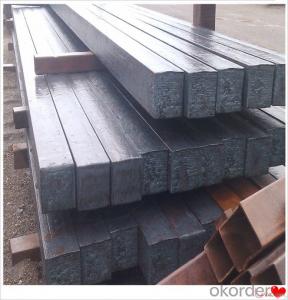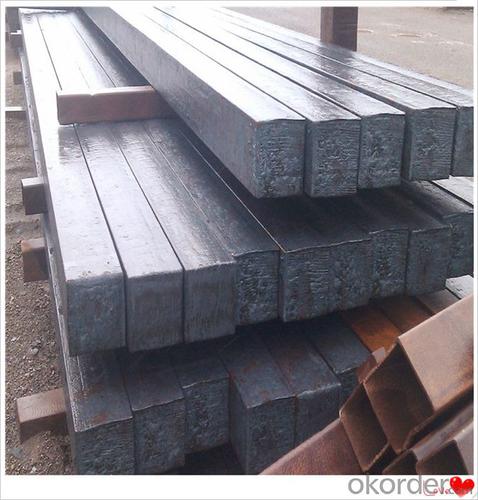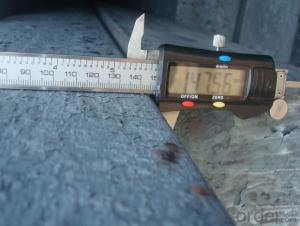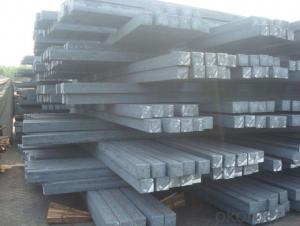5sp Mild Steel Billet Q235,Q255,Q275,Q345,3SP,5SP,20MnSi Made in China
- Loading Port:
- China main port
- Payment Terms:
- TT OR LC
- Min Order Qty:
- 20 m.t.
- Supply Capability:
- 200000 m.t./month
OKorder Service Pledge
OKorder Financial Service
You Might Also Like
5sp Mild Steel Billet Q235,Q255,Q275,Q345,3SP,5SP,20MnSi Made in China
Specification
Steel billet(ingot) by cogging or breakdown of semi-finished products, is the raw material of all kinds of steel mill. Billet section of square, round, flat, rectangular and abnormity of several kinds of, mainly related to the shape of rolled products.
CNBM Q235,Q275,Q345,3SP,5SP,20MnSi Billets Steel
Hot Rolled Steel Billets/ Mild Steel Bar/ Billet Steel
Specification (see below)
Standard: GB/JIS/ASTM
Size: 50*50mm-180*180mm
Length: 3-12mtrs or Customised
Steel material: Q235,Q255,Q275,Q345,3SP,5SP,20MnSi
Technique: Hot rolled
FOB Unit Ton Price $250-350 and Usually I will quote you CFR price.
MOQ: Usually 1000-10000MT/size
Shipment:By Container,Bulk Vessel
Packaging Details: bundles with steel strips or as customers's requirements
Delivery time: Usually within 30 days after the deposit/LC
Inspection:Third party inspection before loading.
Technical data
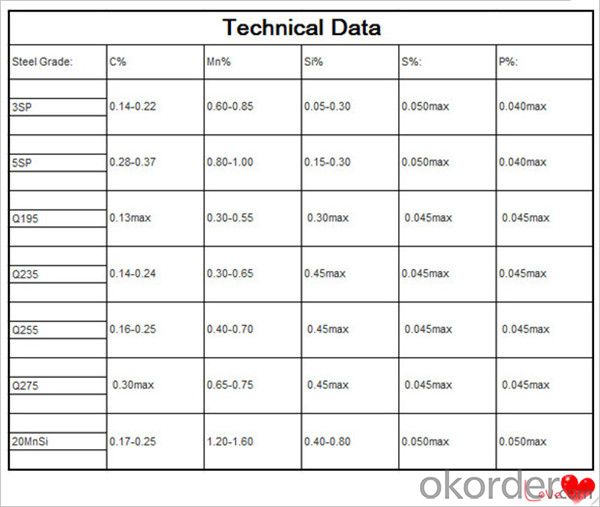
Feature Steel Billet
Rectangular billet continuous casting billet and mainly general carbon steel, low carbon low silicon cold-rolled material, high quality carbon structural steel, high strength low alloy steel, special steel, etc.
The billet is mainly divided into two kinds from the shape:
Slab: cross section width and height of the ratio of the larger, mainly used for rolling plate.
Billet: equal cross section width and height, or a huge difference, mainly used for rolling steel, wire rod. ,
Steel billets have distinct characteristics as compared with already furnished steel bars and products. Billets have a specific grain structure, which enables the metal to be processed more intricately. Steel billets are also known for their malleability and ductility, especially when exposed to varying temperatures during shaping and molding.
Packaging & Shipping
1. Packaging:
1) Small size: in bundles
2)Big size: in bulk
3)in plastic packing or as per customer requirement
2. Delivery time:
1) Normal size: within 7days send from warehouse directly
2) Special size: with 25-30days customer made for you
3. Trade terms:FOB/CFR/CIF
4. Shippment:
1) length:≤5.8m loaded in 20FT Container with 25-27tons
2) length:≤11.8m loaded in 40FT Container with 25-27tons
3) lengnth:≥12m shipped by bulk vessel, FILO terms
Steel Billet Images
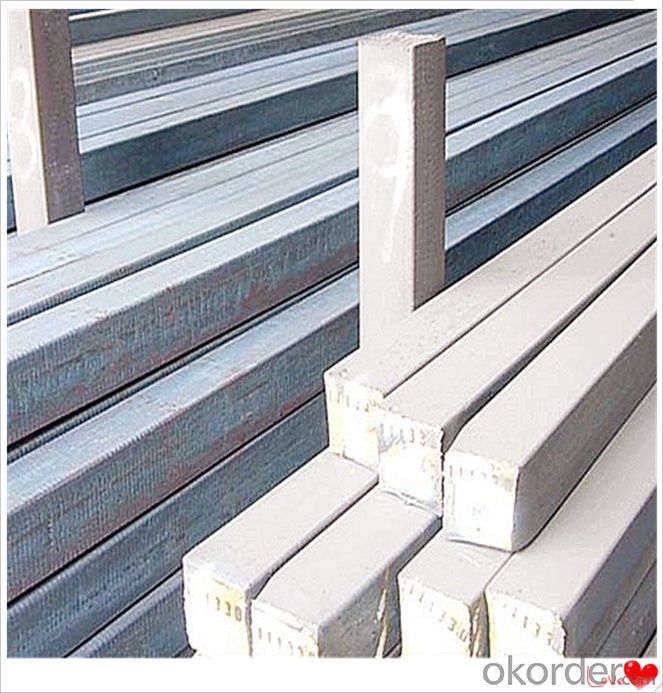
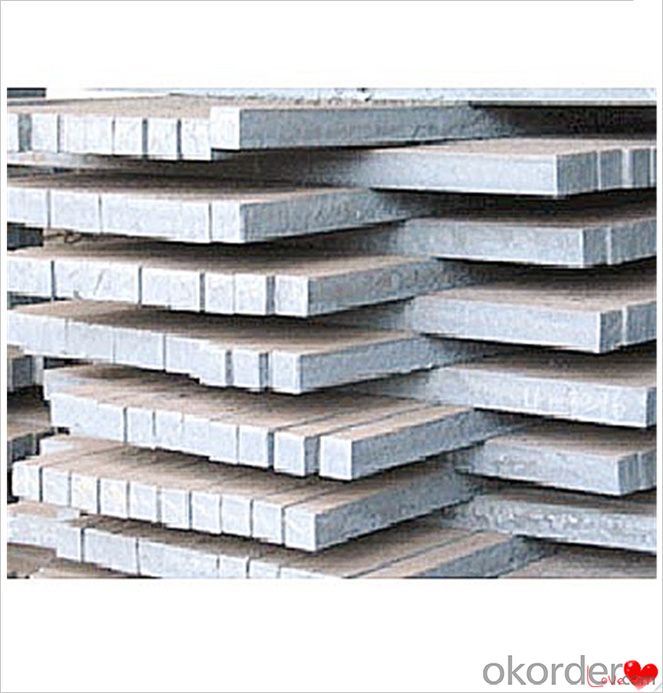
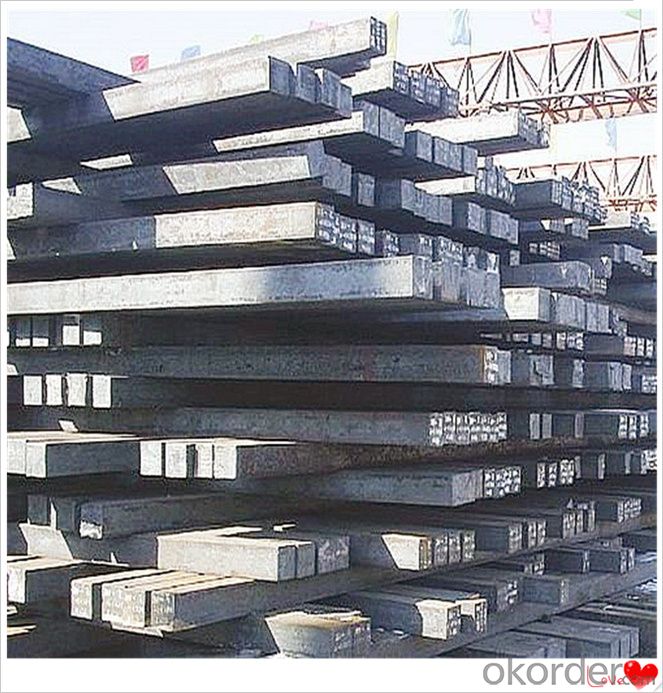
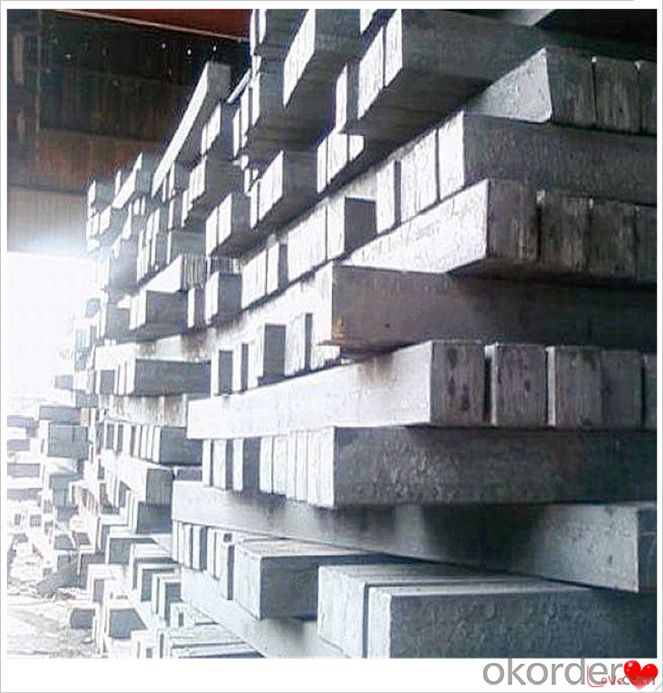
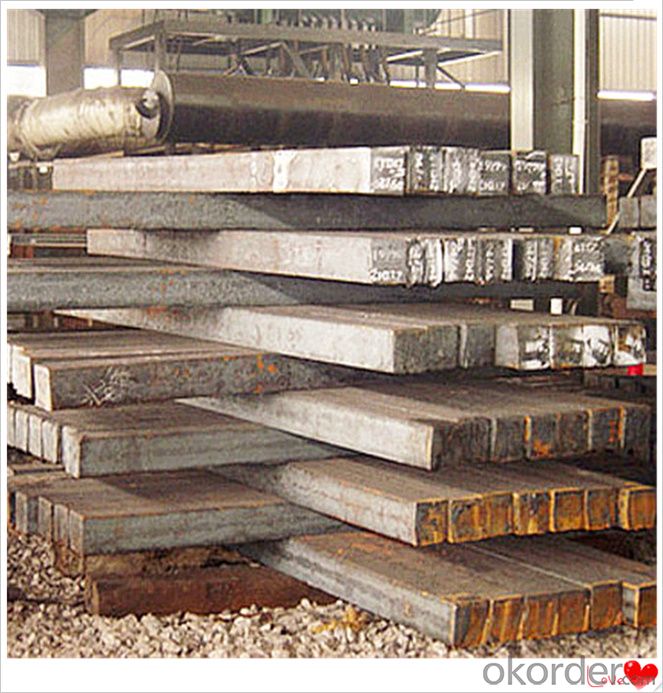
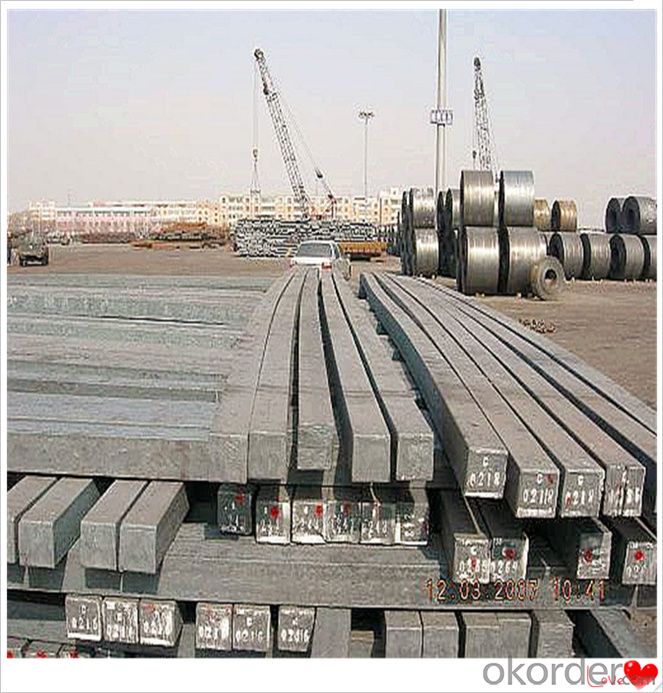
Processing
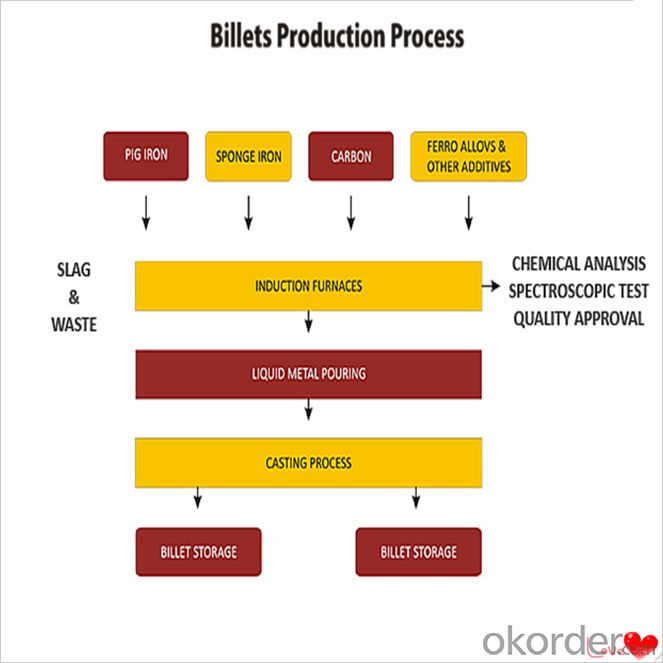
Usage-Billet Steel
Used for the plant, the bridge,shipment building high-rise building construction,lifting and transportation machinery, equipment manufracturing base building the support foundation pile manufacturing.
Billets, or ingots (as they sometimes referred to), are not of practical use until they have been formed into more functional shapes and sizes. While they have already been put in the furnace, they still require a series of shaping and molding procedures such as hot and cold working, milling and cutting before they are sold in hardware stores, or used for different applications. The unformed billets, however, can be used in striking currency such as coins and as reserves, similar to gold bars.
FAQ-Billet Steel
We have organized several common questions for our clients,may help you sincerely:
1) How about your company?
A world class manufacturer & supplier of castings forging in carbon steel and alloy steel,is one of the large-scale professional investment casting production bases in China,consisting of both casting foundry forging and machining factory. Annually more than 8000 tons Precision casting and forging parts are exported to markets in Europe,America and Japan. OEM casting and forging service available according to customer’s requirements.
2) How to guarantee the quality of the products?
We have established the international advanced quality management system,every link from raw material to final product we have strict quality test;We resolutely put an end to unqualified products flowing into the market. At the same time, we will provide necessary follow-up service assurance.
3) How long can we receive the product after purchase?
In the purchase of product within three working days, We will arrange the factory delivery as soon as possible. The pecific time of receiving is related to the state and position of customers.Commonly 7 to 10 working days can be served.
4)Do you have your own QC department?
Yes, we have, our QC department will inspect the goods during the process of mass production and after completion of production.
hot sale!!! Cast Steel Grades/ mild steel bar/ billet steel
(1): High quality steel with reasonable price.
(2): Wide excellent experiences with after-sale service.
(3): Every process will be checked by responsible QC which insures every product's quality.
(4): Professional packing teams which keep every packing safely.
(5): Trial order can be done in one week.
(6): Samples can be provided as your requirements.
- Q: What is the cost of a steel billet?
- The cost of a steel billet can vary depending on several factors such as the size, grade, market conditions, and supplier.
- Q: How are steel billets classified based on their chemical composition?
- Steel billets are classified based on their chemical composition primarily into three categories: carbon steel, alloy steel, and stainless steel. Carbon steel contains mainly iron and carbon, with trace amounts of other elements. Alloy steel is a combination of iron with other elements, such as manganese, chromium, nickel, or molybdenum, to enhance its mechanical properties. Stainless steel, on the other hand, contains iron along with a minimum of 10.5% chromium, which provides excellent corrosion resistance.
- Q: How are steel billets used in the manufacturing of construction machinery parts?
- Steel billets are crucial in the production of construction machinery parts. These semi-finished steel products serve as the raw material for shaping various machinery components. To initiate the manufacturing process, steel billets are heated to a high temperature in a furnace. This heating process enhances their malleability and facilitates further shaping. Once heated, the billets are passed through rollers and molds to achieve the desired shape and dimensions. Construction machinery parts such as gears, shafts, axles, and structural components require high strength and durability to withstand heavy-duty applications. Steel billets, made from high-quality steel alloys, possess these desirable properties, making them ideal for manufacturing such parts. After shaping, the billets undergo additional processes such as heat treatment and surface finishing. These treatments enhance their strength, hardness, and resistance to wear and corrosion. Consequently, the overall performance and longevity of the construction machinery parts are improved. The use of steel billets in the manufacturing of construction machinery parts offers several advantages. Firstly, steel is renowned for its excellent mechanical properties, including high tensile strength and toughness, which are vital for handling heavy loads and resisting impact and fatigue. Moreover, steel billets can be easily machined and welded, facilitating the precise manufacturing and assembly of complex machinery components. Additionally, steel is a versatile material that can be customized to meet specific requirements. By adjusting the composition and heat treatment processes, manufacturers can tailor the properties of the steel billets to suit the intended application of the construction machinery parts, ensuring optimum performance and durability. In conclusion, steel billets are indispensable in the production of construction machinery parts. Their high strength, durability, and versatility make them essential for manufacturing components that can withstand the demanding conditions of construction sites. By utilizing steel billets, manufacturers can create reliable and long-lasting machinery parts that contribute to the overall efficiency and safety of construction projects.
- Q: How are steel billets cut into desired lengths?
- Steel billets are typically cut into desired lengths using a process called sawing or shearing. This involves using specialized machinery, such as band saws or circular saws, to cut through the steel billet along the desired length. The saw blades are designed to withstand the hardness of the steel and make precise cuts. This process allows for accurate and efficient production of steel billets in varying lengths as per the requirements of different industries.
- Q: How are steel billets inspected for surface finish?
- Steel billets are inspected for surface finish using different methods and techniques to ensure quality and compliance with industry standards. One common method is visual inspection, where trained inspectors visually examine the surface of the billet for any defects such as scratches, pits, cracks, or any other irregularities. This inspection is typically done under proper lighting conditions to enhance the visibility of any imperfections. Another method used is non-destructive testing (NDT), which includes techniques such as magnetic particle inspection (MPI) and liquid penetrant inspection (LPI). MPI involves applying a magnetic field to the billet and then applying a magnetic particle suspension that will reveal any surface defects by adhering to them. LPI, on the other hand, involves applying a liquid penetrant solution to the surface of the billet, which is then removed and followed by the application of a developer that highlights any defects. Ultrasonic testing (UT) is another commonly used technique for inspecting the surface finish of steel billets. UT utilizes high-frequency sound waves that are transmitted through the billet, and any reflected waves are analyzed to detect any surface or subsurface defects. This method can provide detailed information about the surface condition and can detect even minute flaws. In addition to these methods, surface profilometers can be used to measure the roughness of the billet's surface. These devices use a stylus or laser to measure the height variations on the surface, providing data on the roughness and texture. Overall, steel billets undergo thorough inspection for surface finish using a combination of visual inspection, NDT techniques, and surface profilometry. These inspections help ensure that the billets meet the required surface finish standards and are suitable for further processing or manufacturing.
- Q: What are the disadvantages of using steel billets?
- Some potential disadvantages of using steel billets include their high cost, the need for specialized equipment and processes to handle and shape them, and their relatively limited availability compared to other forms of steel. Additionally, steel billets can be susceptible to defects such as cracking or porosity, which may require additional quality control measures.
- Q: What are the different types of steel billet forging defects?
- There are several different types of steel billet forging defects that can occur during the forging process. These defects can have various causes and can impact the quality and integrity of the final forged product. Some of the common types of defects include: 1. Surface cracks: These are cracks that occur on the surface of the billet. They can be caused by excessive heating or cooling, improper forging techniques, or the presence of impurities in the steel. 2. Internal voids: These are cavities or voids that form within the billet. They can be caused by incomplete filling of the mold, improper venting, or the presence of gases trapped within the steel. 3. Inclusions: These are foreign materials or impurities that are present within the billet. They can include non-metallic particles, such as oxides or sulfides, or metallic impurities, such as slag. Inclusions can weaken the structure of the steel and reduce its overall quality. 4. Segregation: This refers to the non-uniform distribution of alloying elements within the billet. It can occur during the cooling process and can result in areas of the steel with different mechanical properties. This can lead to inconsistencies in the final product. 5. Dimensional inaccuracies: These defects refer to deviations from the desired shape or size of the billet. They can be caused by improper tooling or die design, inadequate heating or cooling processes, or improper handling during forging. 6. Grain structure abnormalities: The grain structure of the steel can be affected by various factors, such as improper heating or cooling rates. Abnormal grain structures can weaken the steel and reduce its mechanical properties. It is important to identify and address these defects during the production process to ensure the quality and reliability of the final forged product. Quality control measures, such as non-destructive testing and visual inspections, can help to detect and rectify these defects before the finished product is delivered to the customer.
- Q: Can the production of continuous casting billet be damaged by using intermediate frequency electric furnace?
- If there are no other major facts of harm, it seems that there is no such mandatory legal provisions to bear criminal responsibility. Mandatory closing and fines at most.
- Q: What is a steel billet?
- A steel billet is a semi-finished product that is created through the process of casting molten steel into a rectangular shape. It typically has a square or rectangular cross-section and is often used as a starting material for various steel products. The size of a steel billet can vary depending on its intended use, but it is typically around 100mm to 200mm square in cross-section and several meters long. Once produced, steel billets are further processed through rolling or extrusion to create different shapes such as bars, rods, wires, or structural steel sections. Steel billets are widely used in the manufacturing industry as a raw material for the production of a wide range of steel products used in construction, automotive, machinery, and many other sectors.
- Q: What are the main factors affecting the fatigue strength of alloy steel billets?
- The main factors affecting the fatigue strength of alloy steel billets include the composition of the alloy, the presence of impurities or defects, the heat treatment process, surface conditions, and the presence of residual stresses. Additionally, the applied load, frequency, and environmental conditions can also influence the fatigue strength of alloy steel billets.
Send your message to us
5sp Mild Steel Billet Q235,Q255,Q275,Q345,3SP,5SP,20MnSi Made in China
- Loading Port:
- China main port
- Payment Terms:
- TT OR LC
- Min Order Qty:
- 20 m.t.
- Supply Capability:
- 200000 m.t./month
OKorder Service Pledge
OKorder Financial Service
Similar products
Hot products
Hot Searches
Related keywords
